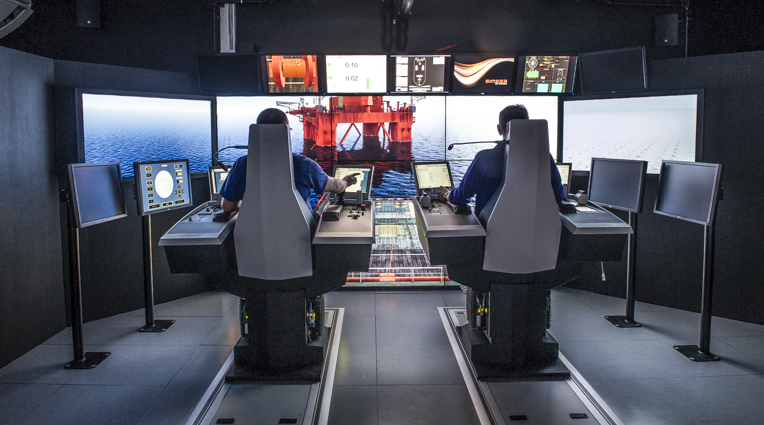
Anchor handling operations are high cost and high risk when moving mobile offshore units from one location to another. Cooperation between the rig and the anchor handling vessel is essential. Detailed planning and thorough preparations are a must. And most important; anchor handling and rig moves require special knowledge and skills. To ensure effective and safe operations this competence need to be maintained; we all tend to forget things we do not practice continuously.
We have now been through a period with low rig activity worldwide with less opportunity to practice. What has happened to the skill level in this period? Of course, it has deteriorated. So, what is the best approach to regain the former competence level now when it seems like the rig activity is recovering?
Simsea can customize any refresher training according to your requirements. However, to get A grade AH vessel and rig crew Simsea suggests a twostep training sequence. Step one includes basic simulator training for the two crew categories. Step two is joint retraining for the crews to facilitate learning from each other. And – AB’s should participate in parts of the training.
The basic training should inter alia include:
- Workshops including characteristics (terminology, rig types, forces, tension, mob, demob, equipment, twist, etc.), stability theory and IT applications, teamwork and communications and bridge procedures, maneuvering, DP operations
- Table tops including Rig Move Meeting: SOW, risk assessment, planning and logistics
- Simulator exercises including deploying PCP and anchor (different methods), towing and recovery of anchors and picking up PCP (different methods)
The retraining should focus on incidents, incidents and incidents including simulator training with waive heights around 3,5 significant: - Deploying incidents like current or windy conditions combined with thruster failure, inappropriate maneuvering towards the rig, technical failure causing the rig to start moving, heavy impact collision with serious damages on rig/vessel; etc.
- Towing incidents like chain breakage, engine trouble, thruster problems, steering problems, maneuvering in narrow waters/harbor/restricted waterways,
- Recovery incidents, like current or windy conditions combined thruster failure, inappropriate maneuvering towards the rig, engine failure causing uncontrolled movement close to the rig, etc.